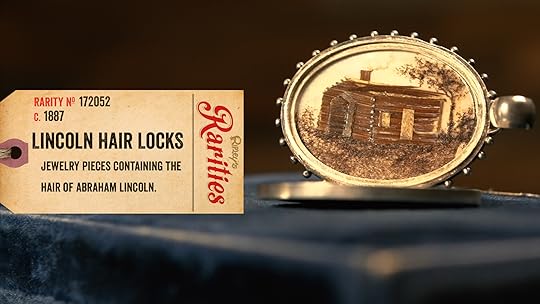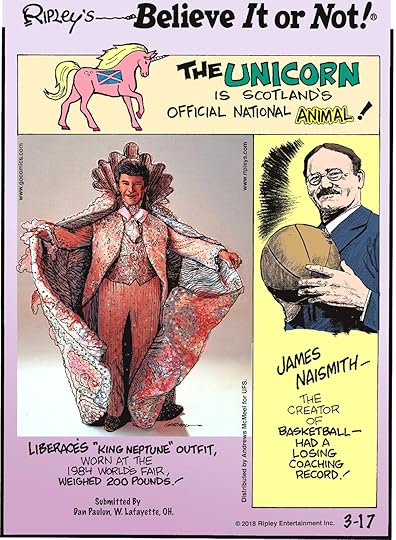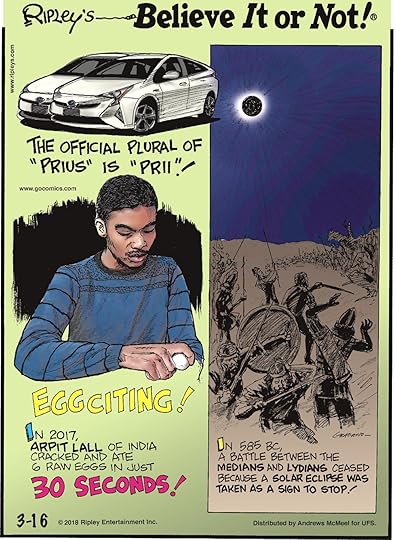Ripley Entertainment Inc.'s Blog, page 355
March 20, 2018
This Jewelry Contains The Hair Of Abraham Lincoln
This Jewelry Contains the Hair of Abraham Lincoln
CARTOON 03-20-2018
March 19, 2018
The Dionne Quintuplets Spent Their Childhood On Display At “Quintland”
Featured in Ripley's Believe It or Not!
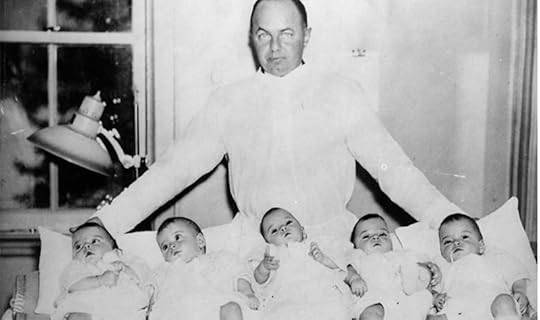
On May 28, 1934, on a small farm in the village of Corbeil in northern Ontario, Canada, Elzire Dionne beat immense odds to give birth to five identical girls. Believe it or not, the Dionne quintuplets are the world’s first recorded quintuplets to survive infancy.
Born at least two months premature, the five babies weighed a meager 13 to 14 pounds combined. With the help of two midwives, Dr. Allen R. Dafoe delivered Annette, Annette, Émilie, Yvonne, Cécile, and Marie. At the time, the birth of five babies at once—with all surviving—was simply unheard of, and the successful delivery quickly drew international attention from the media. To this day, they remain the only known set of identical twins to live to adulthood ever. Another set of surviving quintuplets wouldn’t be born until 1965, though they were not identical.
According to Carlo Tarini, the spokesman for the two surviving sisters—Annette and Cécile—the girls were wrapped in blankets and placed near an open oven for warmth in the family’s tiny backwoods farmhouse.

The Dionne quintuplet’s first birthday.
Many viewed their birth as a sign of hope and strength in the face of the Great Depression. “They were born under the most adverse of circumstances, so to have them all survive was truly incredible,” says Nancy L. Segal, director of the Twin Studies Center at California State University, Fullerton.
The chances of having identical twins are about 1 in 250. The likelihood of having identical triplets and larger sets of multiple births is significantly smaller; The New York Times once reported the odds of identical quintuples to be one in a billion.
A Medical Miracle
Soon after the Dionne quintuplets’ birth, their father reached out to a local newspaper. He asked whether it would be more expensive to run a birth announcement for five babies rather than one.
Initially skeptical about the possibility of quintuplets, reporters and photographers traveled to the Dionnes’ remote Canada home. They indeed saw five newborns—so small that they could all fit in the hands of one of the nurses. The Canadian Press distributed the news to outlets across the country. The Associated Press too received word of the miracle, and the birth of the world’s quintuplets gained international attention. Since no set of quintuplets was never known to have lived for very long, the sisters’ struggle to survive made front-page headlines across the globe.
Within days, the Canadian Red Cross sent nurses and an incubator to the Dionnes’ home. Defying the odds, the sisters grew more and more healthy despite their premature birth. Without a doubt, they became the most famous babies in the world.
On Display
Soon after they were born, a promoter for the Chicago World’s Fair approached the quintuplet’s father. The promoter offered Oliva Dionne—who already had five other children—a large financial reward along with medical care for the identical girls if they attended the grandiose event. Unsure of what to do, Oliva contacted a local parish priest, who encouraged him to follow the money—so long as the priest received one-seventh of it himself. The babies were, after all, a miracle from God, the priest said. Oliva agreed to do just that, but when news spread of his decision, he faced a tremendous backlash.
“There was a major wave of Canadians who said, ‘This is not right. They’re taking away our miracle children to the United States. Those greedy promoters are taking away our miracle babies,’” Tarini says. “The following day, the father was sort of shattered by what was being said in the papers. So, he decided to return the check with a letter saying the children would not be appearing.”
His decision came too late. The Ontario government intervened, whisking the babies away from their parents and passing The Dionne Quintuplet Guardianship Act. The girls became wards of the state, housed in a nursery that eventually transformed into Quintland, a tourist attraction for visitors around the world.

For nine years, the girls were placed on display multiple times a day. Even during the peak of the Great Depression, more than 3 million visitors came simply to watch them from behind a glass mirror. As the girls played together, they could only hear—not see—the viewers, all the while having little contact with their parents, despite them living just across the street.
Heather McAuley, chair of the board of directors for the nonprofit organization Multiple Births Canada, says, “They were kind of made into a zoo…They certainly got sold out. I think the government and the doctor really sold their image and sold the cuteness factor.”
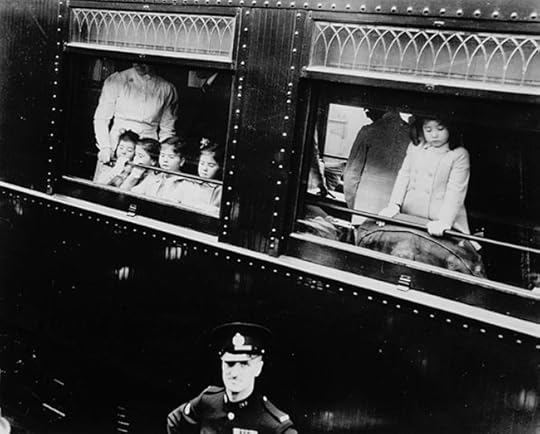
Traveling to see the queen in Toronto.
Quintland generated about $500 million in revenue and brought greater life to the small Canadian village near the city of North Bay, prompting the construction of new hotels, restaurants and souvenir shops. The Dionne sisters became the planet’s most photographed children; they landed on the front pages of TIME and LIFE magazines and appeared on advertisements for major companies—everything from Colgate Dental Cream to cough syrup—along with the fronts of postcards and other mementos. Dolls resembling the Dionne quints outsold those of Shirley Temple and four movies were made about them in the 1930s!

Tragically, the Dionnes didn’t live typical childhoods, Tarini says, and they were subject to scientific experiments. They were “perceived as royalty, princesses, while in fact they were treated like Cinderellas,” Tarini says. While on display to the world, the girls also attended school within Quintland. Yet they “didn’t get to travel very much,” Tarini says, “and they never got to develop as normal human beings, basically.” They later wrote in their memoir, We Were Five, “Money was the monster. So many around us were unable to resist the temptation.”
After Quintland
When the quintuplets turned nine, their parents regained custody of their daughters. Some years later, the sisters claimed they were mistreated by their parents and struggled to develop healthy relationships with their parents’ other children.
In the quintuplets’ memoir, they described the situation as “the saddest home we ever knew.” The Dionne sisters—responsible for completing more chores than their siblings and serving their family meals—largely avoided the public spotlight after Quintland, albeit for a few memoir and book publications about their lives.

The quintuplets at age 13.
By the time they were 18 and on their own, the sisters could hardly tell the difference between a nickel and a dime given their lack of a proper education, says Tarini. One of the five, Émilie, died young, at age 20, suffocating during an epileptic seizure, according to The New York Times.
During its existence, admission to Quintland was free, but the Ontario government put aside the revenue that the girls generated through advertising campaigns and the sale of souvenirs bearing their images—among other things—in a trust fund. That money, Tarini says, was supposed to be for the girls later in life. Instead, most of it was used to pay for the salaries of the nurses who cared for them at the theme park, the policemen who directed traffic, and other amenities like toilet paper for the millions of tourists who passed through.
In the late 1990s, the sisters again reemerged in the media after launching a campaign for the Ontario government to hold a public inquiry into their mismanaged funds. They ultimately won a settlement of $4 million. In the past few years, the two surviving sisters have reappeared in headlines, granting a rare interview with The New York Times in 2017 in their quest to preserve the family home in which they were born. Local residents, especially senior citizens who remembered the Dionnes as one of the biggest stories of their lifetimes, Annette and Cécile Dionne launched a fight to maintain their birthplace and keep it in North Bay. They succeeded. The home has since been transported to downtown North Bay and will likely reopen as a museum in the summer of 2018.
By Jordan Friedman, contributor for Ripleys.com.
Source: The Dionne Quintuplets Spent Their Childhood On Display At “Quintland”
CARTOON 03-19-2018
March 18, 2018
CARTOON 03-18-2018
March 17, 2018
CARTOON 03-17-2018
March 16, 2018
The 15-Foot Wave Of Beer That Flooded London In 1814
Featured in Ripley's Believe It or Not!

When the Horse Shoe Brewery suffered a strange accident on October 17, 1814, it caused a flood of beer (yes, BEER) that rushed through the streets of London and claimed the lives of at least eight people.
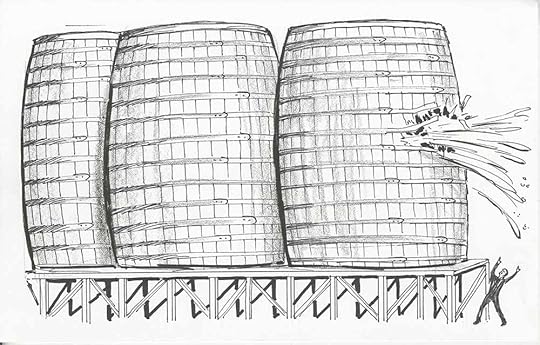
Catastrophe
Located in the St. Giles Rookery neighborhood, the modern-for-the-time brewery featured the latest in tech including a wooden fermentation tank that was 22 feet high and held the equivalent of anywhere from 3,500 to 18,000 barrels of brown porter ale. While such a gigantic wooden container might seem like a disaster waiting to happen to us, the beer-makers apparently had no fear of a major mishap…though they probably should have.
That’s because the tanks were simply held together by iron rings and when one broke on that fateful day in 1814, it took mere hours for the entire contraption to breach with such a force that it destroyed other vats in the space and exploded through the back wall of the brewery. More than 320,000 gallons of beer then rushed through the streets, creating a wave of dark golden liquid that was a staggering 15 feet high.
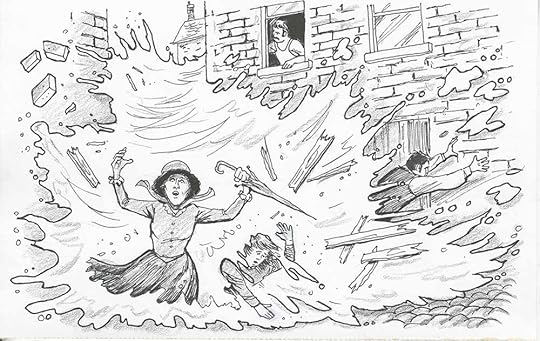
Occurring in a highly populated area where many of the city’s poor lived in underground cellars, the beer ripped through the dwellings causing many to collapse.
Death Toll
Because the disaster occurred on a Monday afternoon, most of the area’s men were away at work, meaning it was primarily women and children who were injured and killed.
Mother and daughter Mary and Hannah Banfield died instantly when the flood hit their home while the pair were having tea, and a teen barmaid named Eleanor Cooper was killed when she was trapped in the collapsed Tavistock Arms Pub. A three-year-old girl named Sarah Bates was swept away by the strength of the beer’s current, and in a nearby basement, four people were attending a wake for a young boy who had passed away the day before when the flood tore through the building, killing them all.
In total, eight deaths were reported due to the flood.
However, the sad outcome didn’t end there. In the days following, there were rumors that others suffered from alcohol poisoning after drinking the beer that they had collected from the streets.
“Unavoidable Act of God”
Creating unimaginable damage and resulting in loss of life—on top of leaving the area smelling like ale for months following the disaster—the brewery was taken to court to face responsibility for their part in the flood. However, the tragedy was eventually ruled an “unavoidable act of God,” which meant that no one was punished. The company was even compensated for the damage which helped to save them from bankruptcy, though none of the families of the deceased or those who lost their homes received any compensation from the government.
While there was never another beer flood that compared to this freakish catastrophe, it was partially responsible for the fact that breweries began to switch from wooden fermentation vats to lined concrete vats which are obviously a much safer choice.
In 1922, one hundred and eight years after the flood, the Horse Shoe Brewery was torn down and in its place the Dominion Theatre was erected. And while it might be the site for plenty of fictional plays and unique performances these days, perhaps none will ever been as strange as the historical London Beer Flood of 1814.
Source: The 15-Foot Wave Of Beer That Flooded London In 1814
NCAA’s March Madness Full Of Free Throws Thanks To Vas Madness
Featured in Ripley's Believe It or Not!

[March 11-17th, 2018] This week genes are mutated by space, a set of ghost tracks appears on the New Jersey coast, and Vas Madness begins.
DNA in Space
After spending over a year in space, astronaut Scott Kelly returned to Earth a changed man. Not only had he gained an appreciation for his terrestrial home, but the telomeres on his DNA had lengthened. Luckily he has an identical twin brother to that scientists can use to compare his condition. Though the telomeres shortened to normal length after a couple days, scientists now say there are some long-term mutations to his genes.

Ghost Tracks
After suffering back-to-back nor’easters, the New Jersey coast has been peeled back to reveal a relic of the past. The coastal rail-line, used in the early 1900s to move sand and munitions, has long been buried in the sand but makes occasional appearances after heavy storms. The ghostly tracks become an ephemeral tourist site before disappearing once again.
Storms Help Uncover ‘Ghost Tracks’ at Cape May Beach https://t.co/BwYhJ2P7cU pic.twitter.com/CnsPOQG0hY
— NBC10 Philadelphia (@NBCPhiladelphia) March 13, 2018
Dog or Bear?
Three years ago, a man in the Chinese province of Yunnan was collecting mushrooms when he found what he thought was an abandoned dog. He took it home, caring for it as it grew up, but it never seemed to stop growing. His 176-pound dog was actually an Asian black bear. He turned the bear in to animal welfare, but they remarked the animal was in great health.

Diamonds in the Rough
A woman in Georgia mistakenly threw away a diamond bracelet and two rings worth an estimated $100,000. After trash pickup, she frantically called the Candler Road Landfill, which was in the process of collecting its daily 300 tons of trash. Fortunately, they were able to divert trucks from her area in time, and spent three hours sifting through 10 tons of garbage to find the “black trash bag” the woman said she had left them in.

March Madness Vasectomies
March Madness has a whole other meaning for urologists. It’s vasectomy season. Believe it or not, vasectomy appointments see a drastic spike during the season of weekday basketball games. The perfect excuse to sit around the house and watch TV, the University of Utah’s clinic even sends men home with basketball themed ice-packs.

Source: NCAA’s March Madness Full Of Free Throws Thanks To Vas Madness
CARTOON 03-16-2018
Ripley Entertainment Inc.'s Blog
- Ripley Entertainment Inc.'s profile
- 52 followers


